Chinese food has almost become a religion for us, Bengalis. And after Biryani, chow mien-chilly chicken is what we love the most. Please correct me if I am wrong, but I strongly feel that way. And quite regularly, I come across a typical question- regarding the authenticity of this cuisine. I somehow feel (not being to china till now) that this cuisine, what we enjoy, is not a typical Chinese cuisine- but an Indianized version of the same. And we can call it Indo-Chinese cuisine. And as with any cuisine, this has stories- need to be told. So, without wasting more time, ladies and gentlemen, let’s explore this enigma named Indo-Chinese cuisine.
Statutory warning: this blog post on Indo-Chinese food, like many others, will be long and boring. Proceed at your own risk
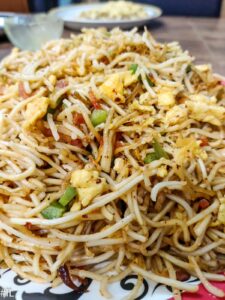
So, how did the Chinese land up in India?
In the late 18th century, one broke businessman Mr. Tom Atchew landed in, what we know as Acchipur today. And once Governor-general Mr. Warren Hastings granted them land for setting up a sugar factory, the first Chinese settlement in India was born. Before this settlement had settled, there was hardly any documented usage of refined sugar in Bengal sweets. However, the history of Bengali sweets deserves a separate mention and will be dealt with later. When Atchew wanted land for setting up a sugar factory, he was given approval by the British. The British felt that any shift in the market which will stop the monopoly of West Indies would significantly help in boosting the profits of East India Company in the sub-continent. This is how Chinese Sugar got introduced into Indian Tea. Because of its origin in China, Locals named it “Chini”.
In India, the readily available sweetener was brown sugar referred to in the Indian language as “Shakkar”. There is a difference between Shakkar and Chini. Shakkar is a brown (unrefined) sugar while Chini is a white free-flowing sugar. Other types of available sweeteners were Misri alias rock candy and Gur or Jaggery (sugarcane & date palm).
However, It seems Mr. Atchew couldn’t run his factory well and it got closed down. Naturally, the workers moved towards the nearest big city- Calcutta. They got themselves settled in the current Tiretta Bazaar area and this was the oldest Chinese ghetto in Kolkata. One of the primary businesses there, was tannery. Now, tanneries in the midst of the city were probably becoming an eyesore of the British government, and the same was shifted beside the eastern wetland. And, thus the new-age Chinatown or Tangra came into existence.
They learned their native language and used their skills in carpentry, leather, dentistry, etc., and started thriving in their new homeland. Slowly none remained in Atchepore rather now we can call it Achipur but the generation of Chinese who remained back in the city never forgot their place of origin and still visit Achipur and its temple during Chinese New Year. And, it’d be interesting to know that though the oldest documented Chinese restaurant was “Nanking”, the oldest operating Chinese (or rather Indo-Chinese) restaurant today is Eau Chew in Ganesh Chandra Avenue, running for the last 90+ years.
You can read about my experience for Tiretta Bazar breakfast here
But where did the Chinese population come from to Kolkata?
- The Chinese who were carpenters by profession came from West Guangdong Province and spoke Cantonese. This Chinese community stayed in the Tiretti Bazar area and set up their carpentry shops which still exist to date. At a much later stage, the Cantonese went into the business of restaurants.
- The Tanners came from East Guangdong Province and spoke Hakka. Since their work involved dealing with rawhide, they set up their business in the then outskirts of Kolkata near Tangra which was then mainly marshlands.
- A group of Chinese who were by profession Dentists and came from Central China (Hubei Province).
- This group of Chinese who were laundrymen came from Shanghai. They set up laundry and dry cleaning business and that is the reason why one can see many Shanghai Laundry & Dry Cleaners around the city
The first set of Chinese immigrants was mainly menfolk. They formed their own groups which were usually from the same village or the same trade. Such Group formations were not uncommon as within mainland China also workers from one province who would have traveled to another province for work would form groups.
Huiguan- the Chinese clubs
These social groups were referred to as Huiguans (“Voi-Koon” in Cantonese and “Fee Kwan” in Hakka) which actually would translate as “meeting place” in English. Thus the Chinese workers who had come to Calcutta started forming these Huiguans. These were actually social clubs which had facilities like that of a school, games like Mahjong, some had basic beds while some had proper boarding facilities for newly arrived workers from the mainland.
Whenever a new immigrant would come from a particular province he would first head straight to his community Huiguans. Here other than meeting his own people he would also be in groups who had similar skill sets like carpenter, dentist, tanners, etc. This way it would also be easy for them to find a job by word of mouth. Another important role for these Huiguans was to make funeral arrangements. When a Chinese immigrant would die here in this city then most likely he would have been alone here without his family. Since it was impossible to send the body back home to Chania they would have to be buried here in the city and with no relatives around it was these very Huiguans that would do the necessary funeral arrangements.
Last but not least most of these Huiguans also had a traditional temple building. So basically it was a social club where one could come to socialize, play some games and pray to their gods.
Chinese newspaper in Kolkata???
At least till 2005, India’s only Chinese newspaper ‘Overseas Chinese Commerce of India’ was a handwritten paper whence the calligraphers dipped their pens in black ink and went on with writing the day’s edition. The newspaper was established in March 1969, by Lee Youn Chin who was a community leader was also a tanner. Written Chinese was not based on alphabets. Instead Chinese characters were glyphs whose components may depict objects or represent abstract notions. At that time they did not have computers with Chinese keyboards, so the only option that remained was to publish handwritten newspapers. Later the uniqueness of the ‘Overseas Chinese Commerce of India’ departed with the availability of Chinese keyboard and it was now composed on the computer like any other newspaper.
The figurative quill pen and cursive handwriting in Chinese ink had given way to the keyboard and the mouse. Editor K.T. Chang, a retired tannery worker, and his “helper”, Helen Yang, are the only two “journalists” who run the newspaper. The Tangra building of the Chinese Tannery Owners Association that houses the office has white signage with a scrawl in Mandarin atop the entrance. They usually work for three hours – between 8.30 and 11.30 am. In that duration, they compose proof and wrap up the four-page tabloid getting information from various Chinese news agencies and other websites.
The first page of the newspaper features international news; followed by a mix of China-specific and city news relating to the Chinese exodus on the second page. The third page of the tabloid is reserved for articles related to beauty and lifestyle. Major news from cities like Hong Kong, Macau, and Taiwan gets featured on the final page. They publish only 200 newspapers daily, but only 180 are sold at a price of Rs 2.50 each.
The story of the Hakka community in the story of the Indo-Chinese community
Cantonese and Hakka are the most dominant subgroups living in Kolkata. Additionally, there were also migrants from Hubei, Shandong, and Fujian provinces. Hakka migrants were able to establish their niches as shoemakers and tannery owners due to the Hindu caste system that relegated any work dealing with leather to the untouchables. By the end of the Second World War, there were around 300 Hubeinese owned dentistry businesses in India. Indian customers were attracted to the Hupak or the Hubeinese teeth setters because of their reputed skills and most importantly low fees.
The Cantonese carpenters had a big reputation as hardworking, cordial, and highly skilled so they were pursued both by the local Indians and the British living in Kolkata. At first, they were engaged in part-time work but after learning English and Indian languages, they were able to gain many subcontracts from large carpentry factories. It was at a much later stage that the Chinese community of Kolkata moved to open restaurants.
Chinese food to this spicy Indo-Chinese food of today
As the population of Chinese grew in the city, there was a growing demand for the availability of their local cuisine. This initiated the journey of Chinese eateries at Kolkata. The first Chinese restaurant to open was Nanking in 1924 by Auyue Shoon of the Au family on the ground floor of Toongon Church or Chinese Temple established by Cantonese migrants from Koon Toong.
Initially, the Chinese eating houses were for the Chinese only. Thus they made authentic Chinese food suited to the palate of the Chinese community only. But the business couldn’t survive on that alone. And, the native residents of Kolkata opined the food to be “too bland” and “raw”. The business started falling in and some genius chefs thought of adopting THE Indo-Chinese cuisine.
The Noodles were made using Indian and Chinese sauces, spices, green chiles, and Ajinomoto. The Chili chicken saw the addition of extra red chilies along with the original ingredient of Soya Sauce. Soon the number of Indian customers increased. They were forced to admit that food was nothing like they had ever tasted before, and yet close enough to home in that it was spicy and tangy just like their own Bengali cuisine. Soon, Bollywood sensations Raj Kapoor, Dilip Kumar, and Sunil Dutt became regulars at the joint based on favorable reviews. Indo-Chinese food started becoming the rage…
Hong family of Eau chew and invention of the Bengali styled Indo-Chinese food
Eau Chew is currently the oldest surviving family-owned Indo-Chinese restaurant in India, run by the community which settled in India from mainland China. Achumpa Huang started Eau Chew back in 1927 with his original utensils which were brought to the city from south China’s Moi Yen village. It started as a low-priced eating house and tiffin provider to Chinese immigrants in the city. Literally, Eau Chew means Europe in Mandarin. It tells about the mindset of the family and once the outlet also had and pork chops on its menu for its European clientele.
Facts On the Indo-Chinese food that we love today
- The Hong family was the inventor of “Schezwan sauce”- now a fixture of every Hakka-styled Indo-Chinese kitchen in India. Schezwan—an Indian pronunciation of “Sichuan”—is a sauce made from onions, ginger, garlic, a mix of Indian spices, and large amounts of oil. The dishes with this name in fact usually bear very little resemblance to ones from China’s Sichuan Province. In every case, it sometimes contains Sichuan peppercorns.
- Pou Chong is one of Kolkata’s last standing Chinese sauce factories, their legendary green chili sauce is used to top up chow mein, is eaten with samosas, and remains central to street food across the country. As informed by the family, when they first made the green chili sauce, they gave it to some street-side vendors to use with their snacks. A cucumber seller began to put it on his slices and sell it to children. They loved the sauce, so they on making more and soon it became an accompaniment with rolls, salads, chops, sandwiches, cutlet, finger chip, samosa, and momo.
- In the 1970s, chefs from Tangra began moving into Bombay and New Delhi to spread the cuisine among the big city populations. At China Garden, one of Mumbai’s first Chinese restaurants, chef Nelson Wang invented the “Manchurian” style of cooking—which is now found across the world. Wang, then the caterer of Chinese food at the Cricket Club of India, took cubes of chicken, covered them in flour, deep-fried them, and dipped them in a spicy peppery sauce.
- Wang not only invented Manchurian Chicken (in which he threw together ginger, garlic, green chilies, soy sauce, coriander, and cornflour), but a host of other dishes that are now considered an inimitable part of the Indo-Chinese pantheon. Creamy Corn Soup, Chicken Lollipops, Date Pancakes, Hot and Sour Soup, and more.
- The Chinese use ingredients like chow sum, bok choy, watercress, Sichuan pepper, tofu, and more in their food. Whereas capsicum, cabbage, carrots, baby corn, black peppercorn, vinegar, and soya sauce are used in Indo-Chinese food using sauces like Oyster, Szechwan, Black Bean, Hoisin, Sweet and Sour, and what not… And these, if you remember correctly, are integral parts of an “authentic” Indo-Chinese food.
In a nutshell, we can say that Chinese cuisine as we see today, apart from a few premium specialty joints, doesn’t have its origin in China anymore. Rather Kolkata has made them evolve into Indo-Chinese cuisine. chilly chicken tossed with Green chilies and even fried rice has never seen china. But whatever it is, we love them and probably that’s what matters. Do let me know your Indo-Chinese food experience. Let’s share stories.
Bon appetit!!!
I can be reached at Indrajit.lahiri@ymail.com
** I must thank my friend, Mr. Amitabha Gupta (famous travel writer and photographer), without whose input and help, this blogpost on Indo-chinese cuisine wouldn’t have been possible**


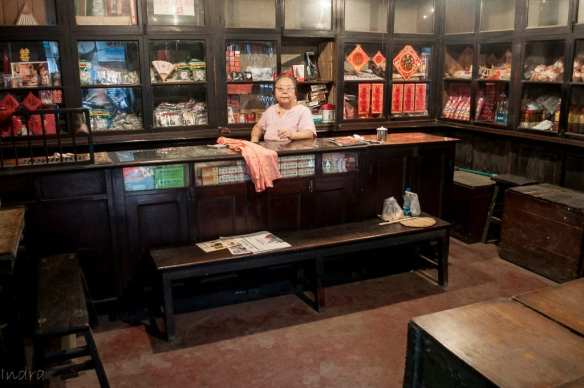
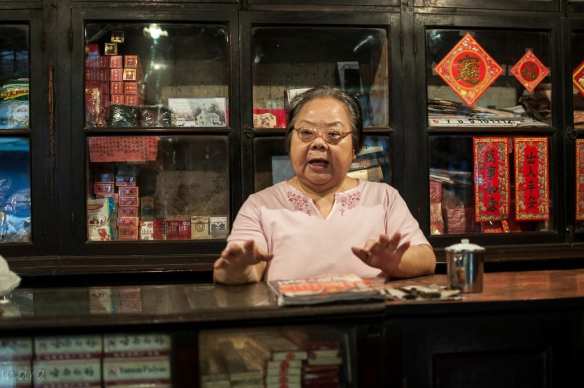
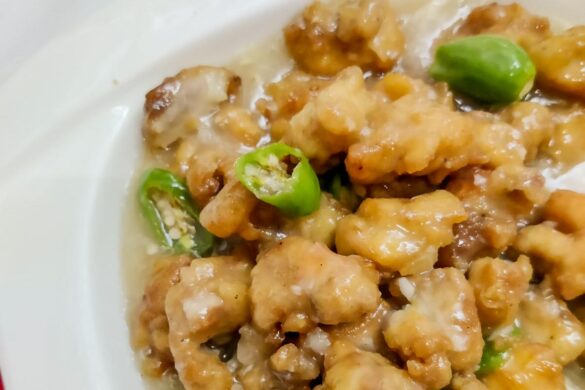

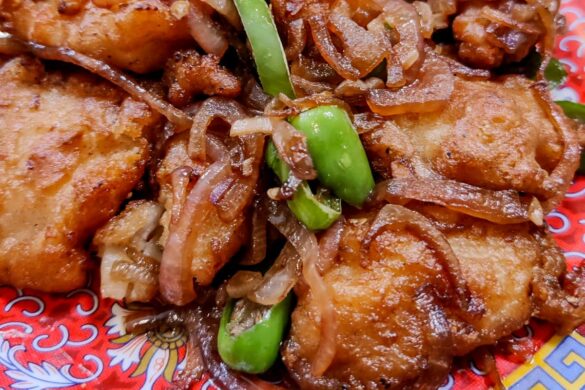
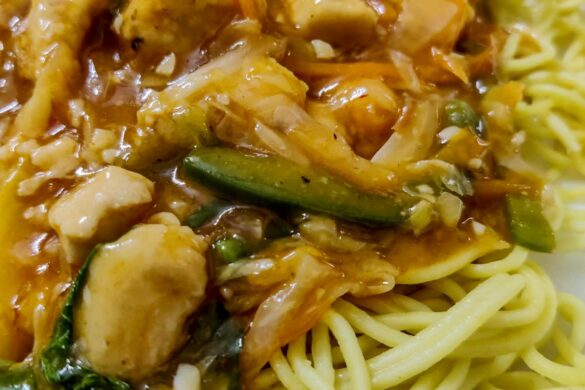



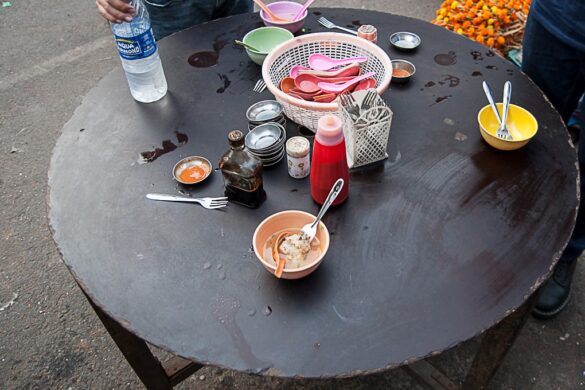

2 comments
Kichhuta jantam, Onektai jantam na. Pronam niyo dada. Outstanding really!
[…] the curious story of Indo-Chinese cuisine […]